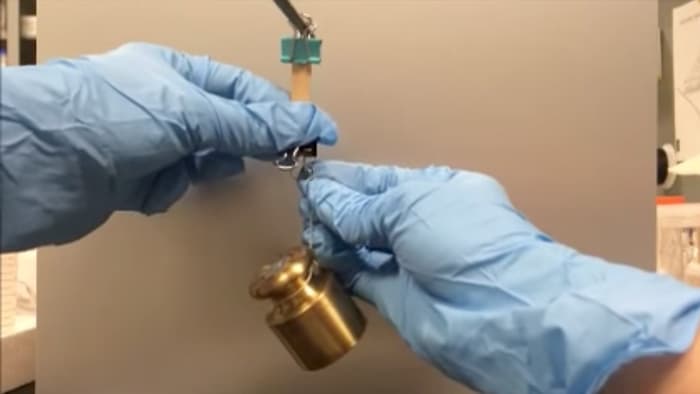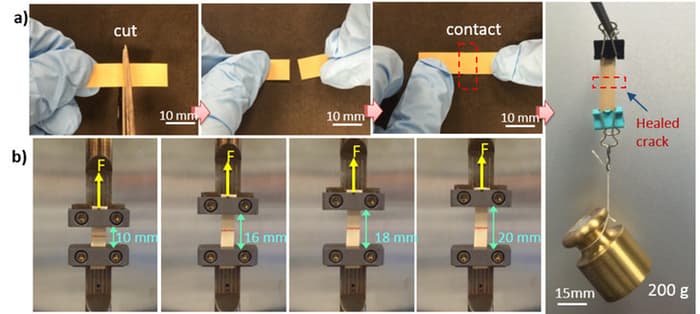
An international team has created a new electronic material that can heal its functions automatically even after breaking multiple times. A response to the issue of electronic materials struggling to work well after breaking and healing, this material could ultimately improve the durability of wearable electronics.
“Wearable and bendable electronics are subject to mechanical deformation over time, which could destroy or break them,” said Qing Wang, Penn State professor of materials science and engineering. “We wanted to find an electronic material that would repair itself to restore all of its functionality, and do so after multiple breaks.”
Self-healable materials are capable of naturally repairing themselves after withstanding distortions – such as being cut in half – with little to no external influence. Similar materials have been created in the past, but were only able to restore one function, which could negatively affect the effectivity of wearable electronics. An example occurs when dielectric material retains its electrical resistivity after self-healing but not its thermal conductivity, increasing the risk of overheating.

Adding boron nitride (a super-hard substance that’s carbon-like in structure) nanosheets to a base material of plastic polymer enabled Wang and his team to produce a tough self-healable material, differing from the usual soft, or “gum-like,” texture in previous models. The sheets resemble graphene, but resist – rather than conduct – electricity and insulate against it. To get the plastic to develop self-healing properties, researchers added hydrogen bonding groups to the nanosheets’ surface. The team then demonstrated the material’s ability to repair itself after being severed when an electrostatic charge pulled the two sheets together, restoring the hydrogen bonds and “healing” the nanosheets. Depending on the percentage of the boron nitride nanosheets added to the plastic polymer, the material may need additional heat or pressure to fix itself, but some forms are capable of self-healing at room temperature.
Boasting even more advanced qualities that set it apart from other healable materials, boron nitride nanosheets are also impermeable to moisture. This feature allows for devices using the material to operate even within high humidity settings such as at a beach. Tests prove that the healed material still maintains its electrical resistance, thermal conductivity, and insulating properties. The research team even found that the sheets were able to restore their properties after multiple breaks. 30 minutes after healing, the material demonstrated its strength by successfully supporting a 200 g weight.
“This is the first time that a self-healable material has been created that can restore multiple properties over multiple breaks, and we see this being useful across many applications,” said Wang.
Source: Gizmag and ScienceDaily
Advertisement
Learn more about Electronic Products Magazine





